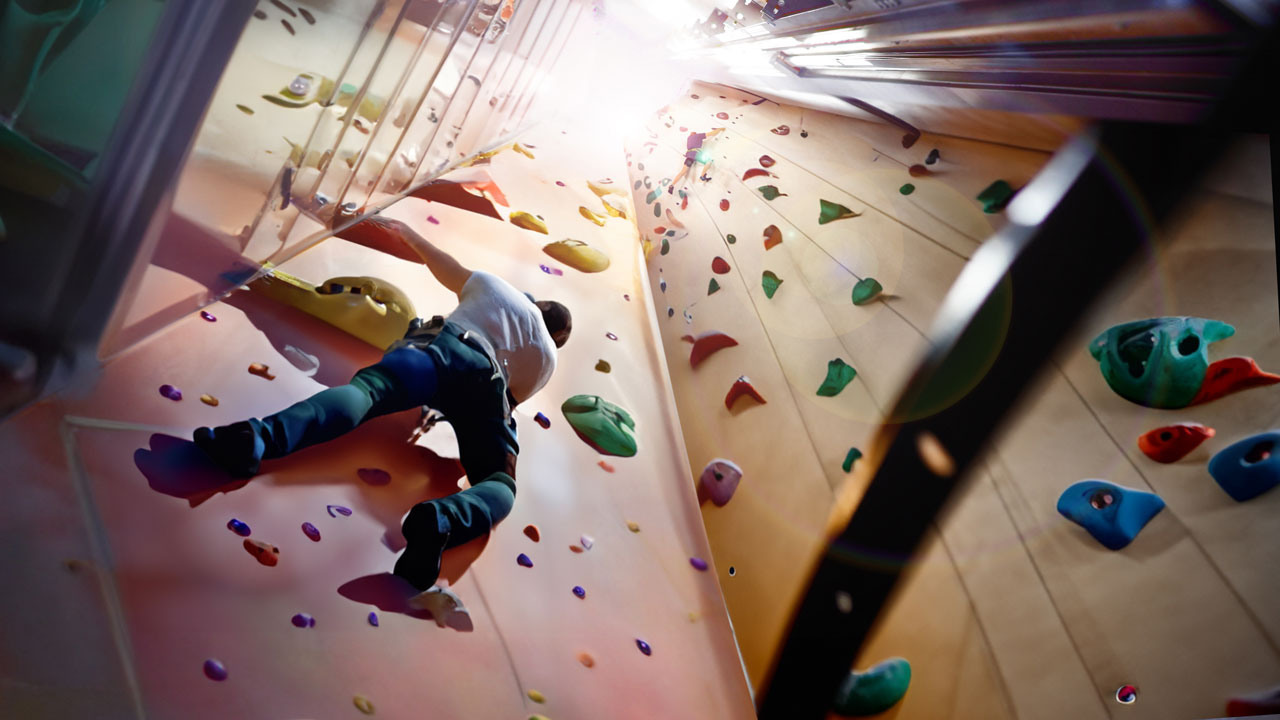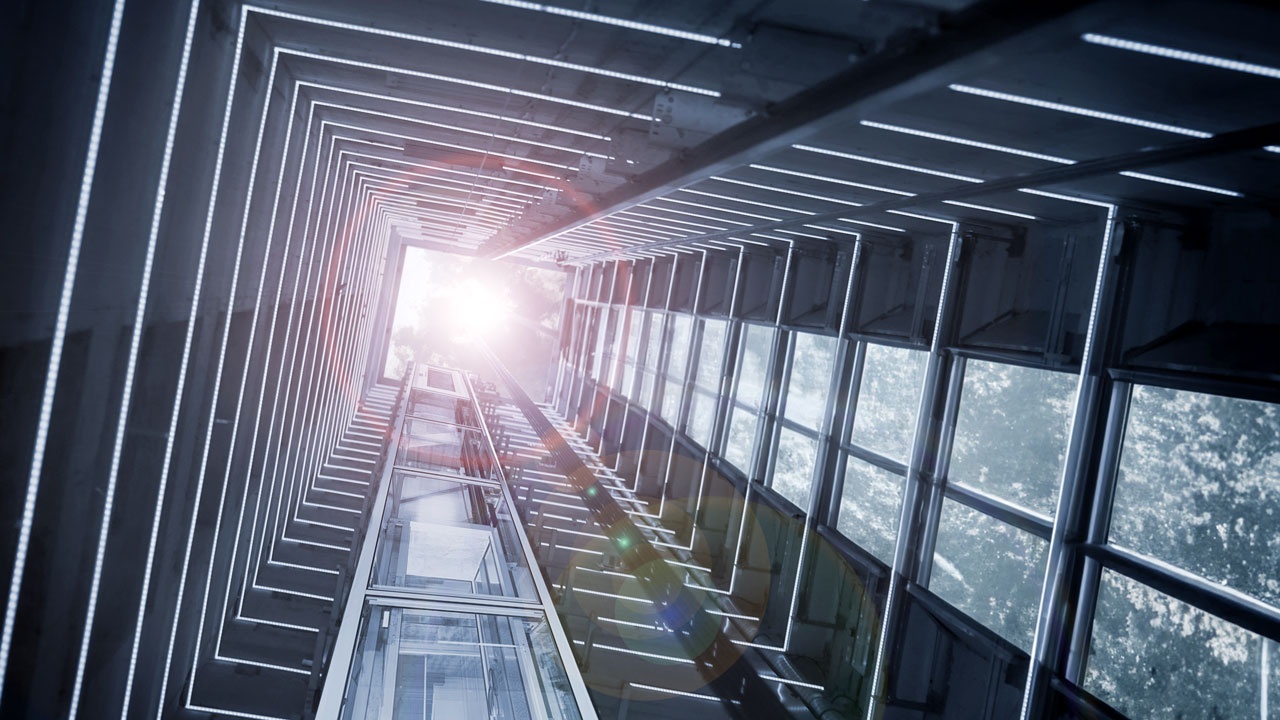
In the first quarter of 2023, over 16 percent of offices in New York City were vacant. This led to the mayor reviewing regulations, zoning, and levies to encourage the property market to convert empty offices into apartments. If this empty space was made into housing, he believes, it could provide 20,000 new homes over the next decade.
While not every building is appropriate for conversion technically or financially, the property market is responding and we’re seeing a growing appetite for adaptive reuse. Conversions that have made the headlines include One Wall Street and 180 Water Street with many more planned in and around New York City.
There are significantly more elevators in an office building compared with a residential development. Tetra Tech’s vertical transportation experts look to maximize the potential of every square foot through finding innovative solutions to repurpose elevator shafts.
Converting to residential elevator
The starting point for any conversion is analyzing what’s currently in place, what’s needed in the future, and what can be removed or repurposed. Here are some key considerations when converting to a residential elevator system:
Traffic flow and capacity
Residential and commercial elevator traffic differ. Residential buildings house fewer people and have a lower peak arrival rate. Occupants also tend to accept longer waiting times, meaning fewer elevators are required.
Modernization
Reusing an existing core makes sense, both financially and in terms of sustainability. There are significant construction costs and time savings in reusing an existing core, as a building is able to retain much of the existing elevator steelwork, reducing labor and material costs. This also reduces the amount of embodied carbon produced, leading to more sustainable design.
Smart technology
There will be opportunities to radically improve the user experience through technology for both a new and reused elevator core. This could include touchless smart phone interfaces, access control, and destination dispatch systems.
Emergency preparedness
Codes are a critical consideration in conversions, as they differ depending on a building’s intended use. Old buildings need to be upgraded to meet current requirements. At a minimum, these three code-related elevator requirements need to be considered during a conversion:
- Power Loss: Standby power is required for all elevators
- Medical Emergency: At least one stretcher-compliant elevator is required to serve all floors, assuming the building is more than four floors high
- Firefighter Response: At least two fire service access elevators (FSAE) are required to serve all floors in buildings taller than 120 feet (or one FSAE in New York City)
Many 20th century buildings used much smaller elevators and lack sufficient space to accommodate a stretcher and FSAE. In these cases, significant shaft modifications may be necessary.
Accessibility
Elevators need to be compliant with accessibility standards as outlined in the Americans with Disabilities Act.
Sustainability
All conversions should have sustainable design in mind and, possibly, sustainability certification requirements. Examples such as high-efficiency lighting, fans with low power consumption ratings, and controls that de-energize the cab when unoccupied and not in use all improve environmental impact and increase appeal to potential tenants.
A building owner, tenant, and facilities manager can also benefit from reduced running costs of regenerative drives and AC gearless machines, as well as remote monitoring systems that facilitate predictive maintenance.
Homes need fewer elevators than offices
Let’s take a 100,000 square-foot, 14-story office that was built in the early 1900s. It has an old-school cellular layout with retail on the ground floor and there are five elevators serving the office floors.
If we convert this to a residential building and add on an additional eight floors, the converted building size increases to 130,000 square feet. For this building, we’d only need three elevators. If all existing elevator shafts are used, this means we can decommission two of the existing shafts and free up 70 square feet on each floor. This adds up to 980 square feet over 14 floors.
The average cost per square foot for a luxury new development in Manhattan is approximately $2,500. The elevator shaft space alone increases the building’s value by over $2 million.

Repurposing a decommissioned elevator shaft
There are many opportunities for creative thinkers when it comes to making good use of an elevator shaft that is no longer needed.
Use existing elevators to build on the premium experience
High-end conversions always need added value for residents to compete with other apartments in the same area.
- Provide dedicated shuttle elevators for attractions like rooftop restaurants, retail complexes, gyms, and observation decks
- Incorporate VIP elevators for penthouse owners
- Create additional light by removing the dry wall front and converting it to a glass shaft
- Use light reflection to improve daylight and give a sense of space in elevator lobbies or apartments
Repurpose the elevator shaft to generate revenue
A building owner can maximize revenue by making smart use of spaces that are no longer used. Revenue-generating conversions could include:
- An indoor climbing venue
- A wellness space
- Retail displays and advertising
Realize an architectural vision
Architectural creativity can be on full display when it comes to elevator cores. With a repurposed space, the design opportunities are endless.
- Designing a lightwell to access more natural light through light tube technology and reflectors
- Visual displays that can rotate to show natural landscapes and enhance wellbeing
- An atrium or vertical garden, using artificial lighting and mirrors to enable enough light for the plants
- An artistic light installation or art gallery
- Extending existing spaces, for example, apartments or the lobby
Hide unsightly operations
Every building has back-end equipment you don’t want people to see. These features can be hidden in a decommissioned elevator shaft.
- Garbage chutes
- Information Technology (IT) equipment, servers, and network infrastructure
- Back-of-house storage
- Services risers or express risers for chiller plant
- Sanitary piping
- Corridor supply air riser
- Electrical closet
- Ventilation
Where elevator shaft space can’t be used efficiently, an office core may need to be replaced to optimize design. Getting creative with redundant spaces in a conversion can help residential buildings stand out to attract the best tenants. A decommissioned elevator shaft can add value to premium residents and operations teams and generate revenue for building owners.
About the author
Moni Solomonov
As part of both Cosentini’s New York office and the NDY vertical transportation team, he’s building on Tetra Tech’s specialist vertical transportation offering in the United States.
Moni is an established vertical transportation manager and technical leader with over 10 years of experience in design, installation and code compliance for elevator, escalator and moving walk systems across North America, focusing on the New York City area.